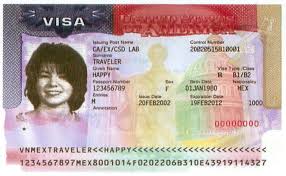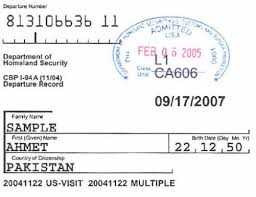While the terms “visa” and nonimmigrant “status” are often used interchangeably, it is important to distinguish one from the other in order to avoid any confusion that could lead to unintended consequences.
Visa
The term “visa” refers to the stamp in the passport, issued by the U.S. embassy or consulate, that reflects the nonimmigrant classification (e.g. H-1B, O-1, L-1, E-3, J-1, etc.) granted to the foreign national.

Sample U.S. Visa
It is the “visa” that allows foreign nationals to travel into the United States under that visa classification. The U.S. visa requirement applies to all foreign nationals, who wish to enter the United States, except for:
- Eligible nationals of visa waiver countries who wish to visit the United States for 90 days or less; or,
- Canadian nationals (except for E visas)
Nonimmigrant visas for temporary workers generally require a petition from a U.S. sponsoring employer on behalf of the foreign national. Nonimmigrant visa applicants for E-1, E-2, E-3 and TN classifications (except for E-1 principal trader and E-2 principal investor), while they also need sponsorship from a U.S. employer, are exempt from the petition requirement and may apply for the visa directly at the U.S. embassy or consulate. For foreign nationals applying for E-1 (principal trader) and E-2 (principal investor) nonimmigrant visas, both a petition and a sponsoring U.S. employer are not required since the purpose of these nonimmigrant classifications is to create employment for American workers — the principal trader/investor are the U.S. employers.
Status
On the other hand, “status” is the period of authorized stay in the United States given to the foreign national after being granted a nonimmigrant visa. This period of authorized stay is reflected on the I-94 admission record.

Sample Electronic I-94 Admission Record

Sample I-94 Departure Record Card
